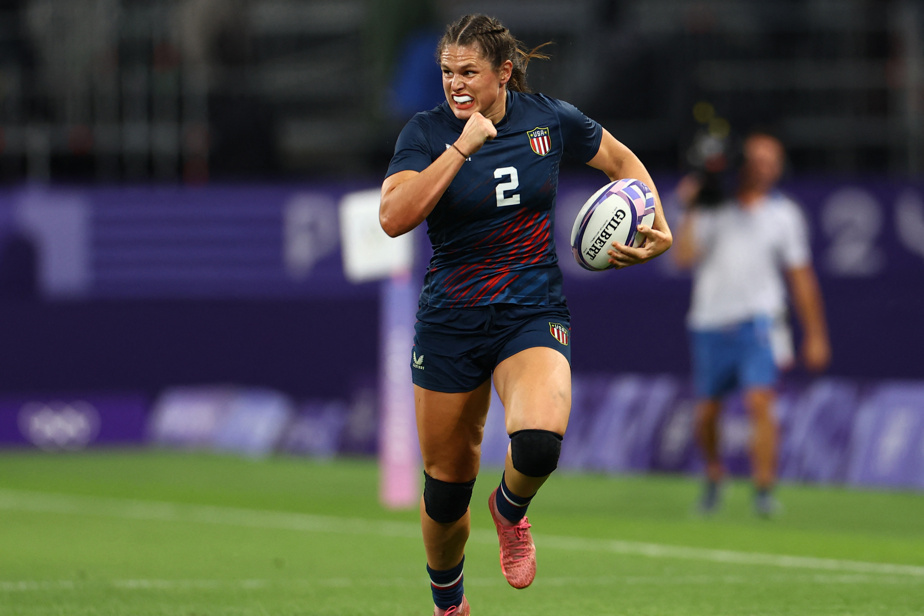The Paris 2024 Olympic Games were celebrated for several reasons, including body diversity. Many spectators highlighted the plurality of athletes’ bodies, especially female ones. A diversity that is not new, but highlighted by social networks.
“We saw a lot of images of really different athletes and beyond the sport, it’s really interesting to see the ethnic and cultural diversity,” says Annabelle Gendron, a regular Olympic spectator. “It shows that you can do what you want, even if you don’t have a super slim or perfect body,” rejoices the artistic swimmer.
It is an opportunity, precisely, for people, and for young people, to recognize themselves among these different models, to feel accepted, appreciated, included.
Karah Stanworth Belleville, former high-level athlete, nutritionist and project manager at ÉquiLibre
These models come from various disciplines, which do not all require the same skills. Hammer throwers will not necessarily have the same morphology as high jumpers. And even within the same sport, athletes can have different silhouettes.
“We have been conditioned to imagine that, to be athletic or to be healthy, you have to have a certain body type,” explains Stéphanie Léonard, a psychologist specializing in body image issues. “To see that there are people who don’t have that body and who have made it to the Olympics is a step forward.”
Women who disturb
Female athletes, who for the first time were as numerous as men to compete at the Paris Olympics, face even more restrictive criteria. “We want her to perform, but we want her to keep this image of being fragile, small, docile,” emphasizes Stéphanie Léonard.
A woman who has physical characteristics that go against this image, “so who has, for example, broad shoulders, more imposing muscle mass and who takes her place, that’s shocking,” she adds.
American rugby player Ilona Maher is one of them. On social media, she took the gamble of becoming a body positivity activist after facing her fair share of criticism about her body.
I’ve been seeing her since the Tokyo Games. Her message is that a female body is how you define it.
Annabelle Gendron
“She really represents the complexity of a girl who has been told her whole life that her body is atypical,” says Stéphanie Léonard. The athlete gained millions of followers on her social networks during the Paris Olympics thanks to her publications – she now has almost 4 million on Instagram and 2.3 million on TikTok. “Her popularity, for me, is proof that we want to free ourselves from this pressure of the perfect body,” believes the psychologist.
Still a long way to go
Body diversity has been observed in several sports disciplines, but “the fact remains that the majority of athletes still conform to our stereotypes,” recalls Stéphanie Léonard.
“If I look at my sport, artistic swimming, the girls are muscular, but the fact remains that there are still a lot of super thin and slim athletes. We don’t have much diversity of bodies, and not much diversity of ethnicity either,” concedes Annabelle Gendron.
“We talk about their bodies, but do we talk as much about their performances?” asks Stéphanie Léonard. Gymnast Simone Biles was particularly upset that people were talking to her about her hair when she had just had an excellent performance in her events – she won three gold medals and a silver.
Another issue: the bodies of female athletes are often sexualized. The official broadcaster of the Games (Olympic Broadcasting Services) had to remind its technical teams to film female and male athletes in the same way, to avoid “persistent stereotypes and sexism”, a few days after the start of the major sporting event.
Rather than focusing on the athletes’ bodies, we can also look at their journeys and their values, recalls Karah Stanworth Belleville, “their leadership, their perseverance, their courage, their surpassing of themselves.”
And what should we remember in everyday life? “We don’t need a specific body or a particular talent to move and to be in motion,” says the project manager at ÉquiLibre.
And the men?
The body positivity discourse has affected almost exclusively female athletes during these Olympic Games. But the issue concerns men and boys just as much, says Karah Stanworth Belleville. The criteria for them, namely height, thinness and muscle mass, among others, are also restrictive. In the last Quebec survey on the health of high school youth, 54% of boys said they were dissatisfied with their appearance, compared to 57% of girls. But “men will be valued for their skills and performance, so there is greater social approval for male athletes.”
